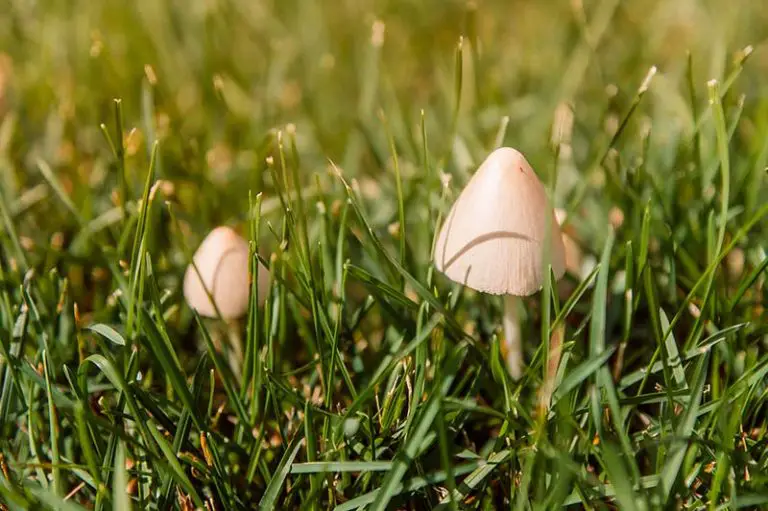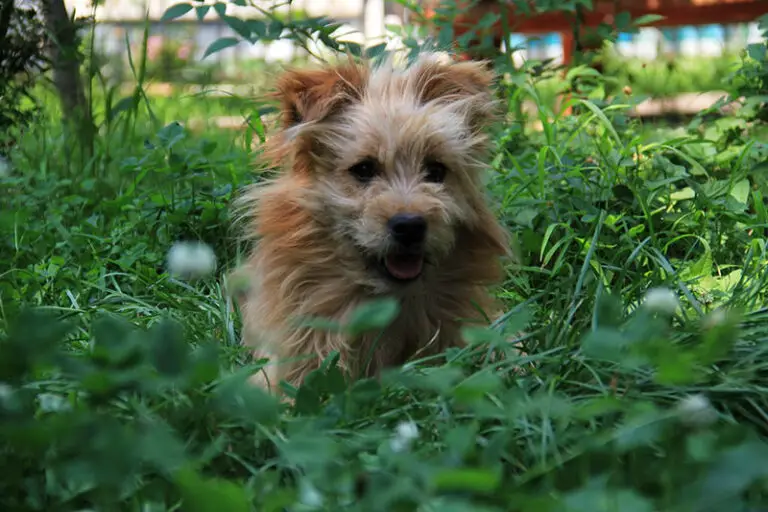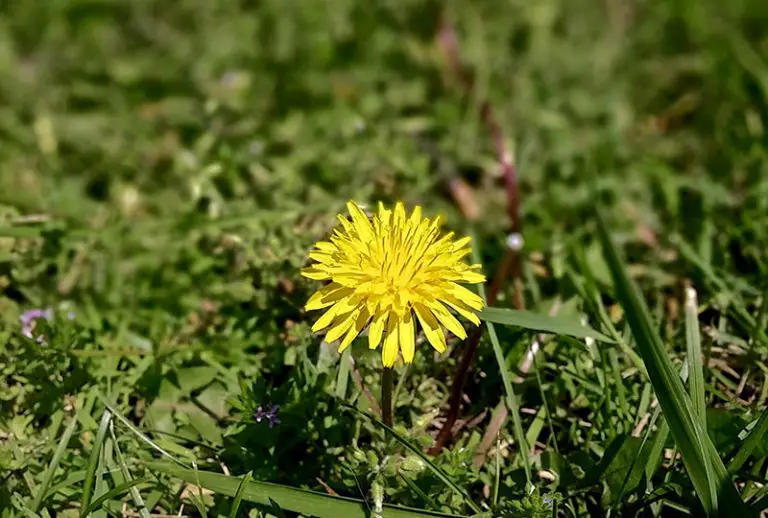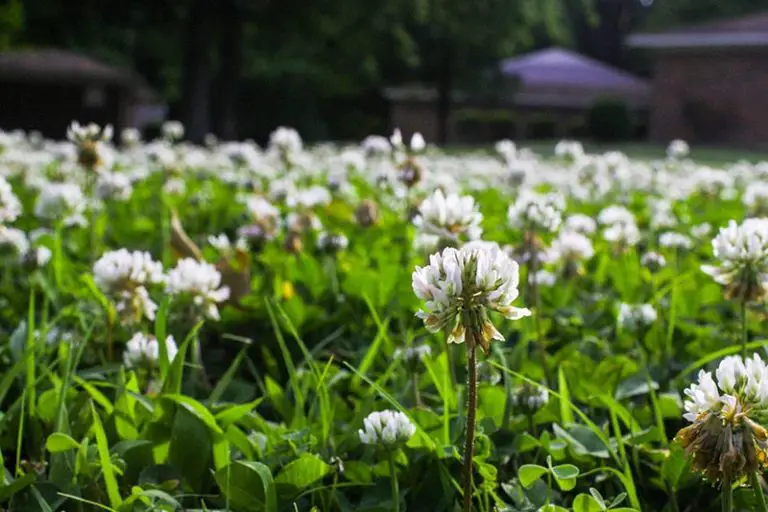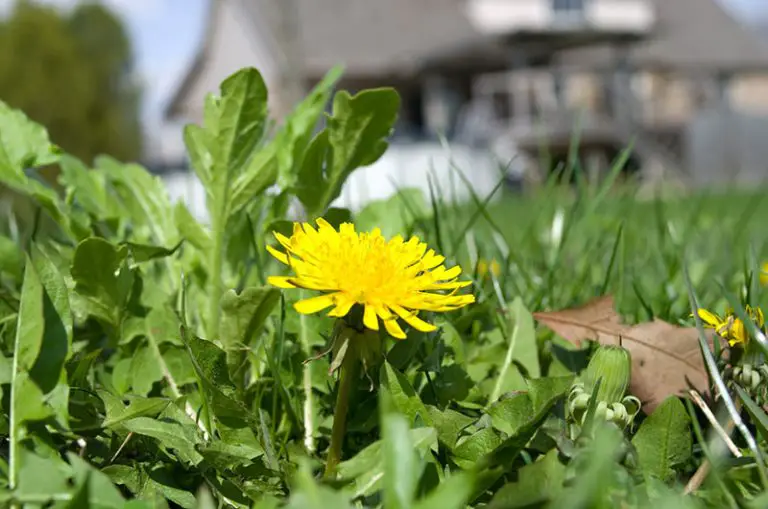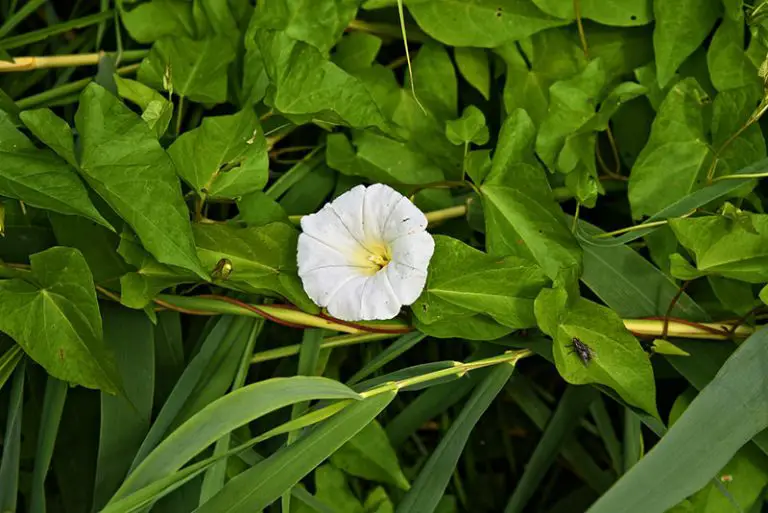Identifying & Controlling Summer Weeds
For most types of plants, summer is the most prolific growing season. The warm temperatures and increased amount of sunlight create the ideal growing conditions for plants to grow with vigor. Unfortunately, this also includes the growth of many invasive summer weeds.
Broadleaf summer weeds include black medic, carpetweed, purslane, ground ivy, pineapple weed, prostrate knotweed, spotted spurge, and oxalis. Summer weeds that look like grass include barnyardgrass, crabgrass, goosegrass, and nutsedge.
In this article, we explain the identification and control of several common summer weeds that may take over your lawn or garden.
Annual Summer Weeds Explained
Any type of plant that germinates from seed, matures, and produces more seeds before dying over a period of 12 months is an ‘annual’. With that said, most types of annual plants only live for 6 months before dying off.
There are many types of weeds that can be considered ‘annual’ weeds. These weeds fall under one of two categories; either being ‘summer annuals’ or ‘winter annuals’. As per the name, summer annuals germinate in the spring or summer and die off when the first frost of winter sets in.
As summer annuals die every year, they have to seed themselves to grow the following season. In order to guarantee that they grow back, these weeds produce a very large number of seeds; some types of annual weeds can produce as many as hundreds of thousands of seeds. All they need is access to soil, sunlight, and water to germinate into a new batch of weeds each year.
Broadleaf Summer Weeds
Black Medic
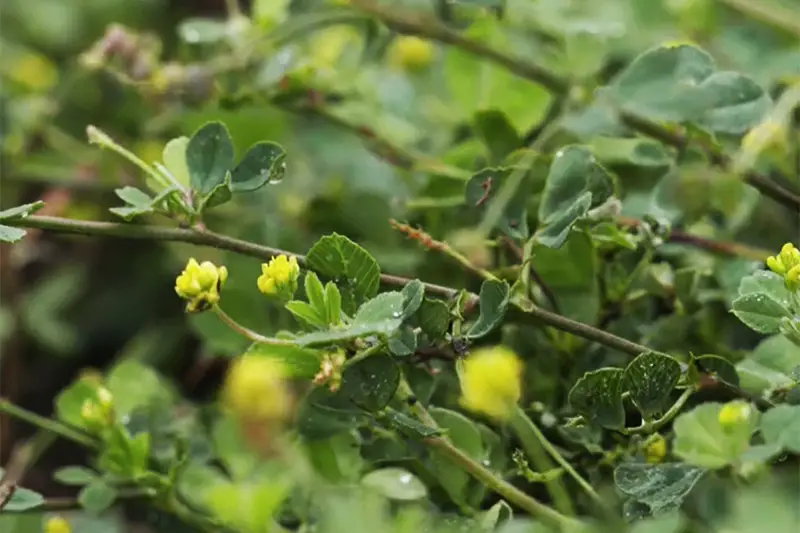
Information: Black medic is an annual summer weed in most areas, with the exception of the south where it can grow as a perennial. It tends to grow in poor quality soil and is therefore often found in lawns low in nitrogen and phosphorus.
Identification: Black medic grows very low to the ground, having trailing stems and a long taproot. It has three small leaflets that sit at the end of multibranched stems. When it flowers, black medic produces bright yellow, globular clusters of petals. At maturity, its seed pods turn black.
Treatment: You can pull black medic by hand; you should also treat the area with a preemergent herbicide to prevent reinfestation the following season. For severe infestations, you can kill Black medic with a broadleaf herbicide.
Carpetweed
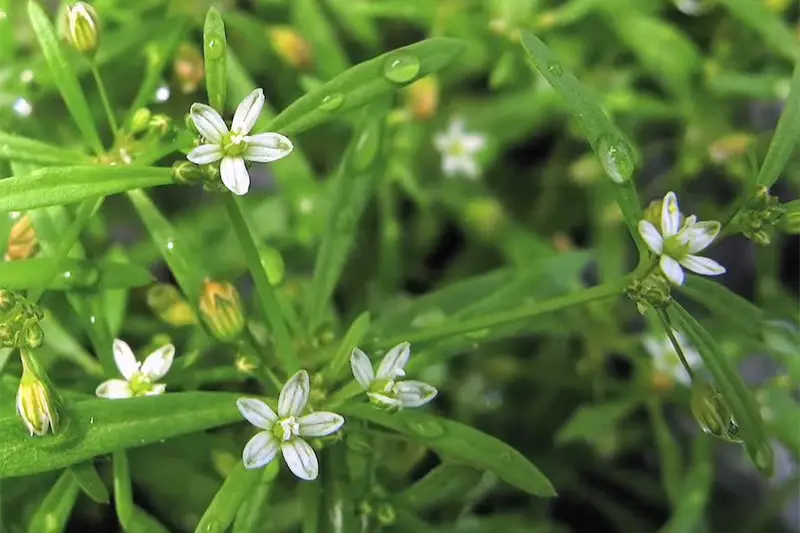
Information: Carpetweed is a summer weed that is often confused for other types of lawn weeds. It grows and spreads quickly after it germinates. This weed is most often found in patches of dirt or thinned grass.
Identification: Carpetweed typically grows flat to the ground, however, it may also climb and grow up fences. The leaves of this weed grow along its stem in a distinctive pattern of whorls (spirals). It produces small, white flowers that have five petals each. The flowers grow at the joints between the leaves and stem in bunches of 2 to 5 flowers.
Treatment: Get rid of carpetweed by pulling it by hand or using a herbicide. To prevent reinfestation, treat the area with a preemergent herbicide for carpetweed, such as oryzalin, pendimethalin, or benfin.
Common Purslane
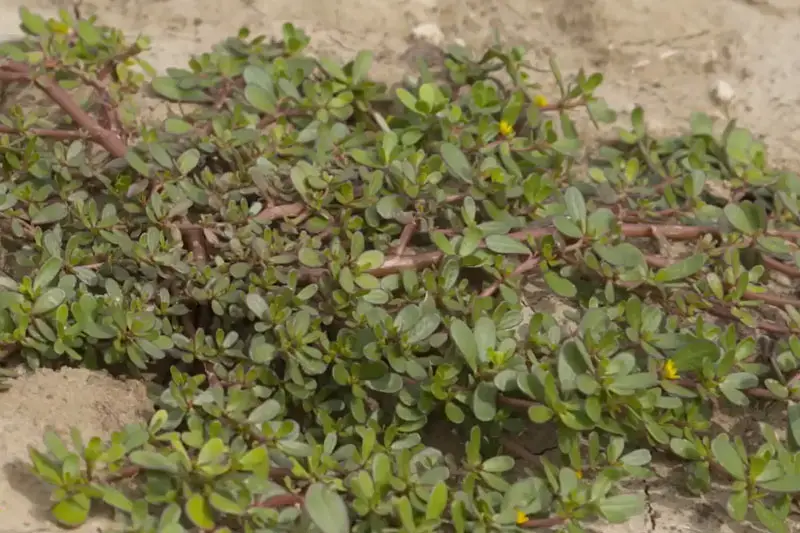
Information: Common purslane is a summer weed found throughout the world. Although it’s edible, you shouldn’t eat the purslane you find on your lawn or garden. This weed thrives in low-traffic areas with poor quality soil. It typically prefers to grow in drier conditions, although it will still compete well in wet soil.
Identification: Common purslane has reddish-brown stems that grow to be about 12-inches long. Its stems grow in a branching, spoke-like pattern. Even in a dry period, the succulent stems and leaves of purslane can remain firm and moist for several weeks. It produces small yellow flowers that have 5 petals and open up on sunny mornings.
Treatment: Treat common purslane with a herbicide containing 2,4-D and Dicamba, labeled for the control of this weed.
Ground Ivy
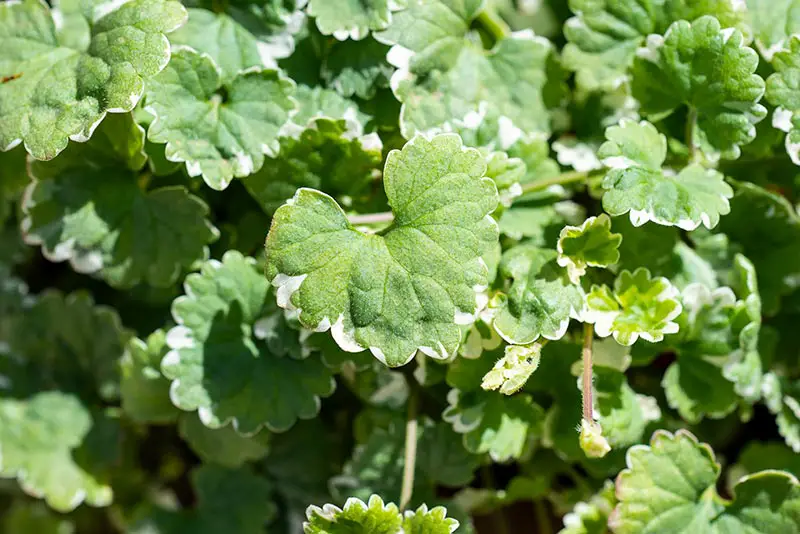
Information: Ground ivy is a vigorously-growing aromatic summer weed. In addition to being a common lawn weed, ground ivy is found in floodplains, disturbed sites, and low woods. This weed thrives in moist, fertile soil.
Identification: Ground ivy is distinguishable by the way in which it grows, creeping over the ground. It pushes out other plants by growing in dense patches. The leaves of this weed are heart-shaped, have scalloped edges, and give off a musky, minty aroma if crushed. It produces tubular, lavender-colored flowers.
Treatment: Remove small patches of ground ivy by pulling by hand or raking the soil. To get rid of the weed completely, you must remove all parts of its root system. For larger infestations, use a non-selective herbicide containing glyphosate.
Pineapple Weed (Wild Chamomile)
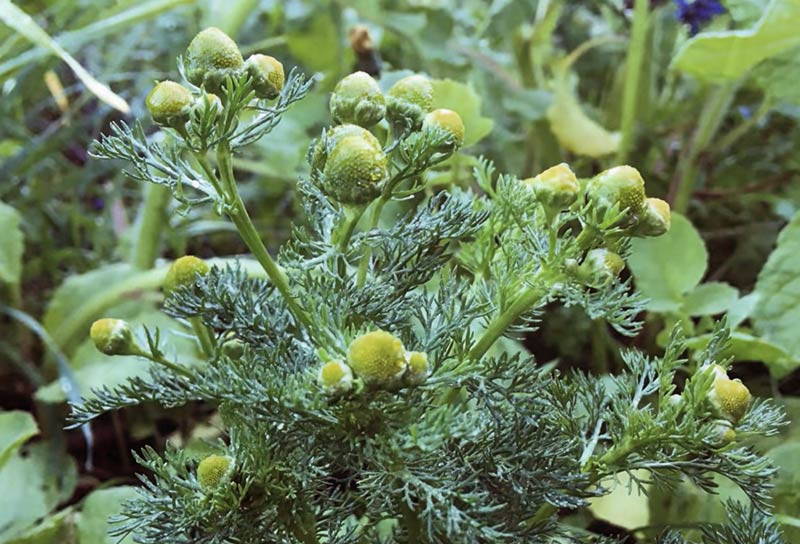
Information: Pineapple weed or wild chamomile is a common summer weed. It thrives in compact, rocky soils and areas with thin grass.
Identification: Pineapple weed has vertical stems that branch out from its base. It has hairless leaves that grow alternately from its stem. This weed produces light green flowers that somewhat resemble pineapples, and that give off a pineapple odor when crushed.
Treatment: You can use a non-selective glyphosate weed killer to carefully treat pineapple weed growing along the edges of driveways or your lawn. For growth among the turfgrass, you should use a selective broadleaf weed killer.
Prostrate Knotweed (Wireweed)
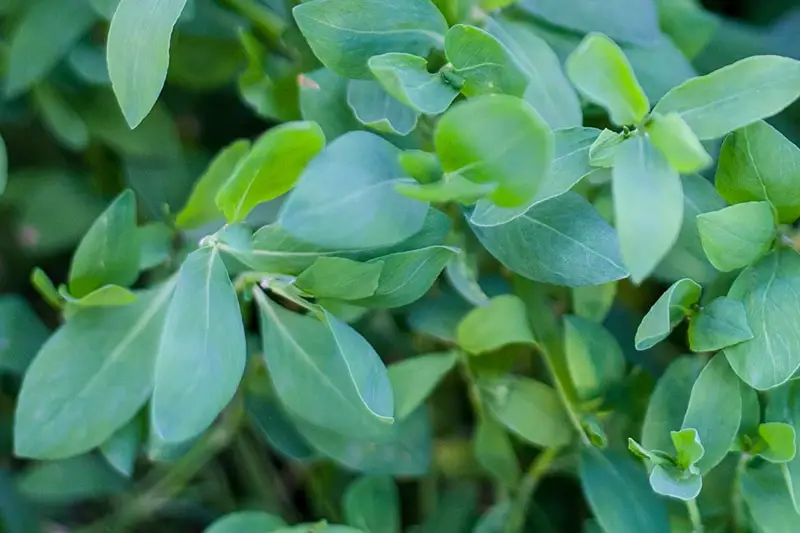
Information: Prostrate knotweed germinates the earliest out of all summer annual weeds in March or April. This weed is often confused with prostrate spurge, which instead germinates later in the mid-summer. This weed grows well in compacted soils and survives periods of drought due to its deep taproot. It is slow-growing and can be mistaken for grass when it first germinates.
Identification: Prostrate knotweed can grow in patches up to three feet wide. It has tough stems that give way to many more branching stems. It grows leaves from these smaller branching stems. Throughout the summer, this weed will bloom tiny flowers.
Treatment: Due to its tough stem, it’s possible to pull prostrate by hand. It’s easiest to remove the entire plant when the soil is moist from rainfall or irrigation. The control of this weed is difficult in late summer after it establishes itself, even with herbicides; treat immature weeds while they’re still growing for best results.
Spotted Spurge
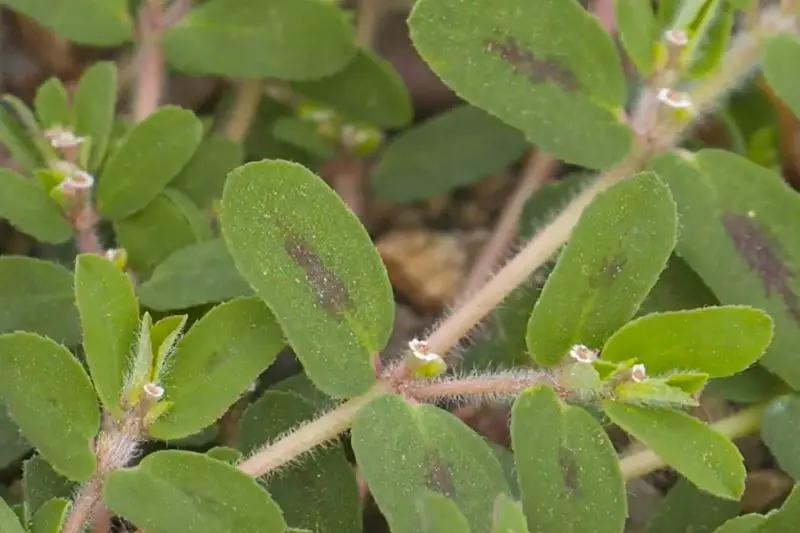
Information: Spotted spurge is a common annual summer weed. As we’ve mentioned, it’s often confused for prostrate knotweed. This weed will grow along driveways, paths, and roadsides, as well as your lawn. It thrives in compact soil, preferring areas where it has little competition with other growth.
Identification: Spotted spurge grows in a dense mat, having one central taproot that can grow over a foot into the soil. It has stems that branch in a spoke-like pattern, and breaking a stem will cause a milky, white sap to flow from it. The leaves that this weed produces have a reddish stripe down their centers.
Treatment: Control of spotted spurge can be challenging as herbicides have a hard time penetrating the waxy cuticles on the leaves. To increase the effectiveness of the herbicide, use it in conjunction with a ‘sticker/spreader’ product; this makes the herbicide stick to the weed’s foliage and helps it to spread evenly over the foliage surface. Ideally, you should use a non-selective herbicide containing glyphosate. To prevent reinfestation, treat the area with a preemergent herbicide containing pendimethalin or oryzalin.
Oxalis (Yellow Woodsorrel)
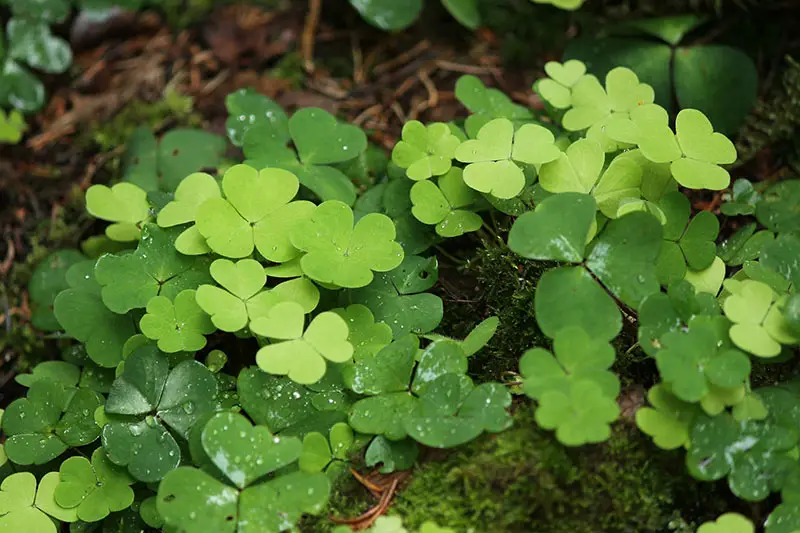
Information: Oxalis is a typically annual, sometimes perennial, summer weed. It tends to infest areas of thinning turf. The seed pods of this weed hold up to 50 seeds; when the seed pods mature, they burst open from the slightest of contact, spreading the seeds to a distance of up to 8 feet.
Identification: Oxalis looks similar to clover, having leaves with three small heart-shaped leaflets. The leaves are attached to long stems. This weed produces flowers with five small yellow petals that grow in clusters of five or more.
Treatment: Currently, there are no selective herbicide products for oxalis that are safe for use on warm-season grasses. On cool-season grasses, the only herbicide that will work is Triclopyr. Using a sticker/spreader will improve the effectiveness of any herbicides on this weed. Apply a preemergent containing isoxaben, oryzalin, or pendimethalin to prevent this weed growing the next season.
Grassy Summer Weeds
Barnyardgrass
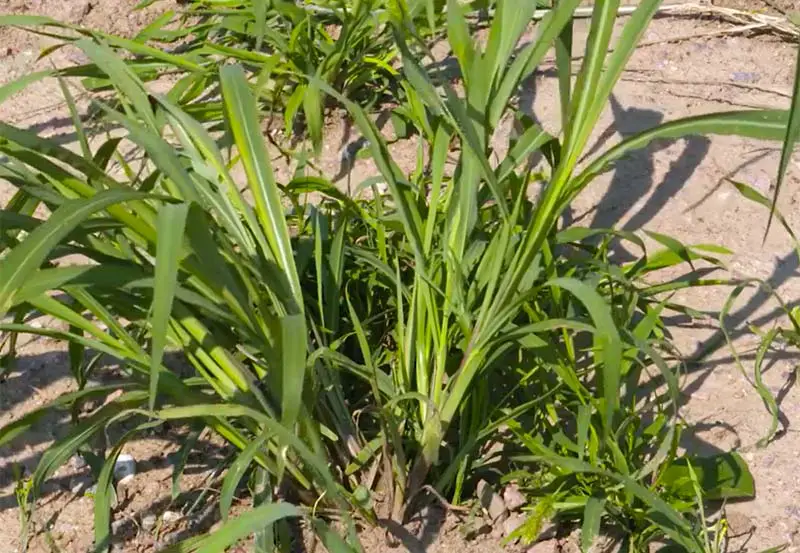
Information: Barnyardgrass is an annual grassy summer weed that germinates in the late winter to early spring. This weed thrives in moist, highly fertile soils that contain lots of nutrients.
Identification: Barnyardgrass grows flat to the ground in a semicircular pattern. It has thick, hairless stems, that grow upward up to 5 feet in height. The stems may have a red to maroon tint at their bases. This weed grows dark green leaves that are smooth and hairless, and have a white midvein range. Barnyardgrass has fibrous roots and green to reddish-purple seed heads.
Treatment: Use a selective weed killer safe for use on lawns to kill barnyardgrass.
Crabgrass
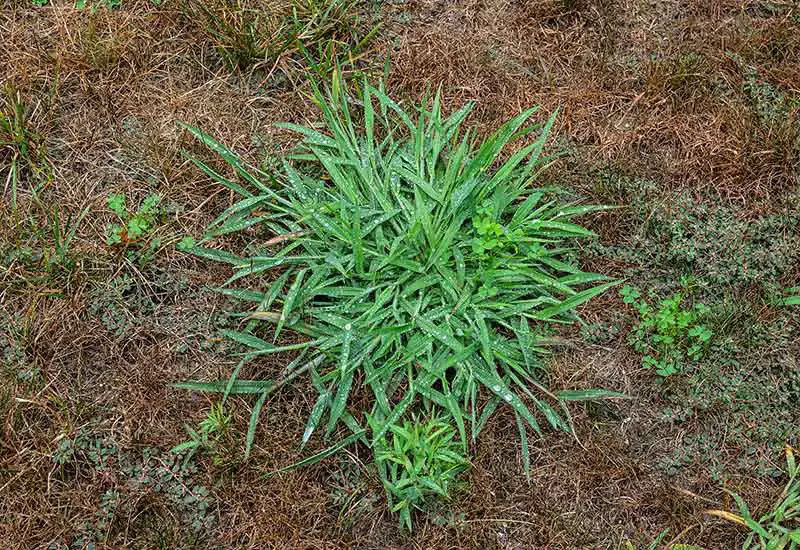
Information: Crabgrass is an aggressive and invasive grassy weed. It will take over large areas of your lawn, growing in large, unsightly clumps. This weed tends to grow in thinned areas of the lawn, particularly those that have been scalped with a trimmer.
Identification: Crabgrass is pale green and grows both upwards and prostrate to the ground. It grows in large clumps across turf that appear similar to the legs of crab. There are two main types of crabgrass; smooth crabgrass is smaller and hairless, while large crabgrass is hairy and grows to be relatively larger. The seedheads that this weed produces have 2 to 6 branches at the top of its stems.
Treatment: Use a selective weed killer to kill crabgrass in lawns. The best way to control this weed is to use a preemergent herbicide as soon as soil temperatures reach 55°F.
Goosegrass
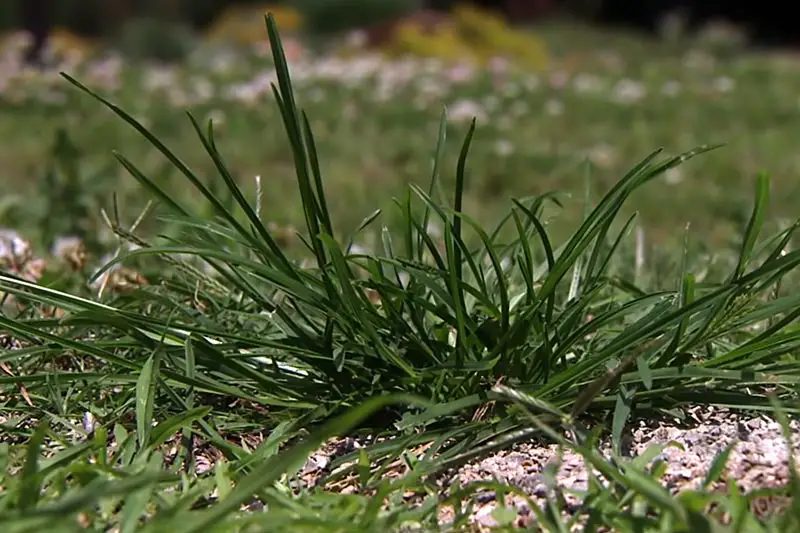
Information: Goosegrass is a grassy summer weed that germinates a couple of weeks later than crabgrass. This weed tolerates heavy traffic, survives in compacted soil, and is unaffected by low mowing heights.
Identification: Goosegrass grows in clumps. It is easy to distinguish by its flat, whitish stems. This weed’s seedheads have 3 to 7 spikes, forming at the tips of its stalks. The seeds on the seedheads have a zipper-like appearance.
Treatment: If you spot the weed early, you can remove young seedlings by hand or using a small trowel. For established weeds, you’ll need to use a selective herbicide.
Nutsedge (Nutgrass)
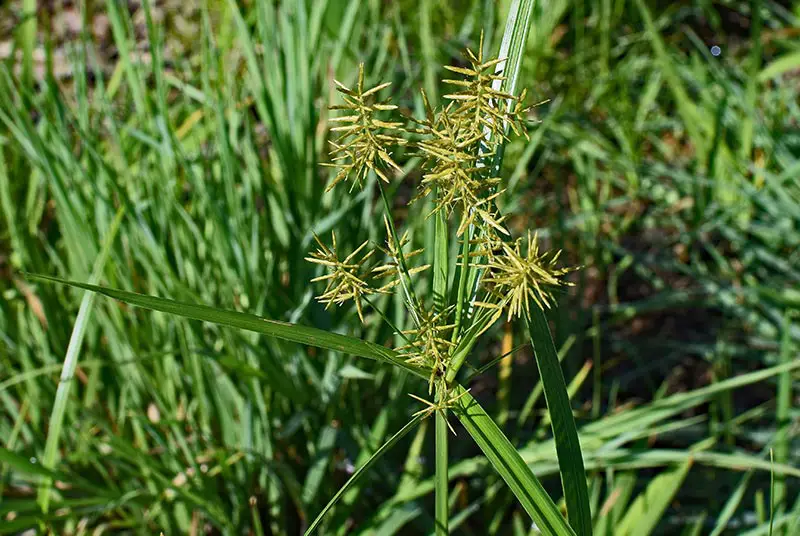
Information: Nutsedge is a grassy weed that grows quickly in the warm weather of summer. This weed is so-called as it reproduces through underground tubers called ‘nutlets’.
Identification: Nutsedge appears very similar to grass, having long yellow-green blades. There are two varieties of nutsedge common in the US; yellow nutsedge and purple nutsedge. Both are so-called due to the color of the flowers they produce. The roots produce small, round nutlets.
Treatment: It isn’t possible to treat nutsedge with a standard broadleaf herbicide. You’ll need to purchase a herbicide specially designed for the control of this weed. As this weed is so aggressive, it’s likely you’ll have to treat it multiple times before you get rid of it completely.

